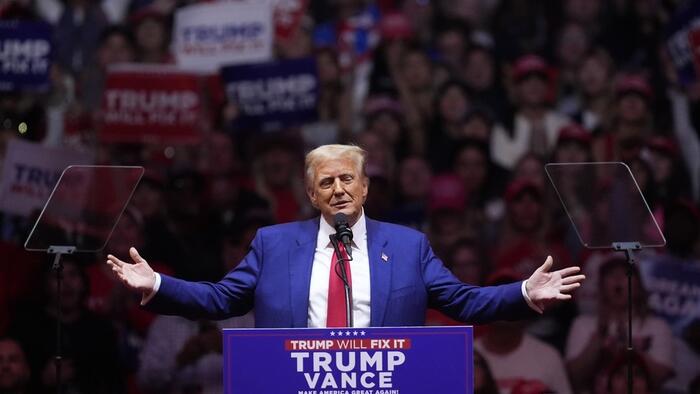In anticipation of a Donald Trump rally set for Madison Square Garden, Democrats and mainstream media quickly mobilized to counter what they perceived as a significant challenge. The prospect of Trump filling the iconic venue sparked alarm among liberals, who immediately resorted to historical comparisons. A narrative emerged suggesting that Trump’s choice of Madison Square Garden was an homage to a notorious pro-Nazi rally held there in 1939. Notable figures like Hillary Clinton echoed this sentiment by suggesting that Trump was replicating the atmosphere of that bygone event, claiming it signified a “danger” to the nation. Clinton’s rhetoric encoded a sense of urgency, warning listeners to recognize the risks posed by Trump, framing them as a clear and present danger.
This depiction of the rally as a neo-Nazi assembly was echoed by other Democrats, including Kamala Harris’s campaign partner, Tim Walz. He drew a direct correlation between Trump’s rally and the historical gathering of fascists, implying that Trump was deliberately invoking these associations. Such statements underscored the political atmosphere where rhetoric was weaponized to not only critique Trump but to delegitimize his supporters and events. Critics claimed Trump’s actions were steeped in divisiveness, while supporters argued that referencing the Nazi rally was an unfounded attack meant to incite anger and fear among the populace.
As the rally took place on Sunday night, it became clear that the media’s dire predictions were unfounded. The event featured diverse speakers and included a black woman performing the national anthem—a striking contrast to the alleged “Nazi” implications. Many took to social media to highlight the absurdity of labeling the rally as a neo-Nazi event, emphasizing the attendance of Jewish supporters and engagements within their community. Posts on platforms like Twitter boasted visuals of Trump-supporting Jews at Madison Square Garden, which undermined allegations of a racism-laden atmosphere suggested by critics.
Challengers of the mainstream narrative continued to deride inflammatory claims, noting the irony of the accusations. For instance, AOC referred to the rally as a “mini January 6th,” a characterization that resonated poorly with many as it lacked substantial evidence. This particular sentiment reflected a fear of political violence but was criticized for diverting attention from the actual context of the rally. Supporters responded with a blend of humor and indignation, highlighting the discrepancies between the rally’s atmosphere and the severe, often exaggerated claims made by political adversaries.
Multiple voices from the Trump-supporting camp amplified the notion that the rally was misrepresented. Claims that it resembled a Nazi gathering were met with ridicule and disbelief, particularly when juxtaposed with images and experiences shared by attendees. The portrayal of the rally as a celebration of inclusivity clashed with the narrative crafted by its detractors. Through various social media posts, images of Jews actively participating and even performing traditional rituals—such as wrapping Tefillin—further emphasized the rally’s diverse demographic, contradicting assertions of it being a racist, exclusionary environment.
In a broader context, these exchanges painted a vivid picture of the contemporary political climate, in which narratives are often selectively crafted to fit specific agendas, particularly within contentious debate over Trump’s influence. The stark division regarding interpretations of events continued to underscore how media narratives may skew public perception of political gatherings. While Democrats and their allies pointed towards historical parallels laden with fear, supporters celebrated a rally that they felt transformed the political landscape by showcasing solidarity and community among Trump’s base. In conclusion, the Madison Square Garden rally transcended the binary narratives of hatred and exclusion, instead highlighting the complex intersections of race, politics, and communal identity in America today.

